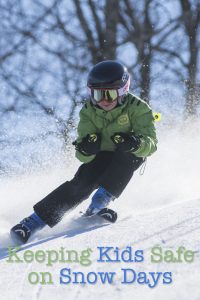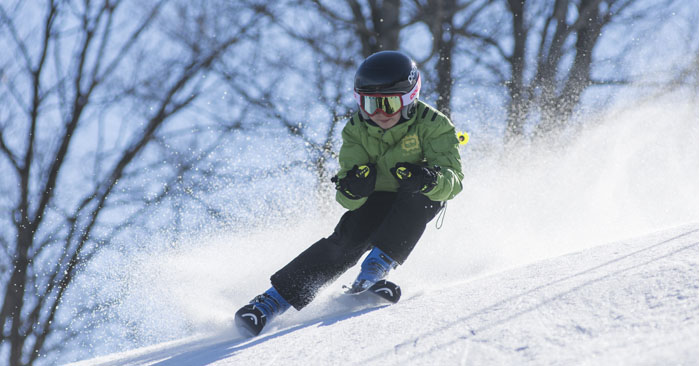Remember the excitement of a snow day as a kid? Waking up to the fresh, untouched blanket of snow and running down to watch school cancellation announcements on TV. The second your school is declared closed, a warmth of overjoy fills the air. Suddenly, your day now revolves around making snow angels, sledding down hills, and sipping hot chocolate.
 While many parents also enjoy a winter wonderland, most are concerned about the safety of the children as they run off to build snowmen and partake in snowball fights. Before kids take to the streets, it is important for parents to inspect their child’s gear and go over a few safety precautions. Below are ten rules for safe snow days:
While many parents also enjoy a winter wonderland, most are concerned about the safety of the children as they run off to build snowmen and partake in snowball fights. Before kids take to the streets, it is important for parents to inspect their child’s gear and go over a few safety precautions. Below are ten rules for safe snow days:
Layer in Three’s
When helping your child dress for a snow day, make sure they have a base layer that wicks moisture, a middle layer that will insulate, and a waterproof outer layer. Additionally, children’s fingers, toes, and face need extra love since they are the most prone to cold exposure. Therefore, your child should have proper gloves, hats, scarves, etc. for these.
Polyester over Cotton
Because cotton clothing absorbs moisture, it isn’t an ideal fabric for children who are playing in the snow. Wet cotton plus cold weather can be disastrous for a child and result in hypothermia or frostbite.
No Wiggle Room
Check to make sure children’s shoes fit properly. Loose shoes can result in wet feet yet tight shoes can limit circulation.
Sunblock
Don’t be misled by the freezing temperatures, it is extremely important to wear sunscreen in the winter. The sun’s harmful rays are just as strong in the winter, particularly UVA rays. Additionally, the sun’s reflection on the snow can actually create more powerful rays, making it crucial to apply sunscreen throughout the day.
Stay Hydrated
Stress the importance of staying hydrated in the winter months. Like the sunblock myth, most people forget to drink water when it’s cold. However, a child can lose a good amount of water weight while playing outside so staying hydrated is important.
The Buddy System
The buddy system is always important to explain to your child, but it is essential on a snow day. Your child should always be with a friend, in case there is an accident and one person needs to seek out help. Depending on the age of your child, you may also want them to carry a cell phone, which would make contacting an adult, in case of an emergency, much easier.
Sledding Protocols
Make sure your child understands the risks associated with sledding and show them how to properly sit on a sled. Sledders should always remain seated, facing forward.
Ice-Skating Precautions
Public indoor or outdoor rinks are the safest choice. However, if your child is going to a frozen lake or pond, make sure safety signs around the lake/pond are green. Yellow signs indicate that skating should be done with precaution and the ice is less stable.
Explain Frostbite
Children should know what frostbite is and the initial signs indicating frostbite. If their nose, or any exposed areas, begins to turn red and tingly, it is time for the child to come inside.
Always Have Cocoa
Maybe not cocoa, but always have something warm and ready for when your child comes in after a long, playful day in the snow. Start up the fire and get out the marshmallows. Your child will be glowing with happiness!
Katie primarily focuses her research and writing efforts on youth safety and development. Right now, she is concentrating on advocacy projects for Mayor Law.
View all posts by Katie Bassett here.







0 Comments on “Keeping Kids Safe on Snow Days”
Can you believe we have had 4 snow days since the new year,living in Newfoundland we always have lots of snow !!
Wow!
Great tips for those of us that live where it snows!
:) Hope you’re getting some snow days off work/school at least!
These are really good tips. Let them have fun but keep them safe.
Thanks for the comment, Richard. Glad you liked this post!
Thanks for the wonderful tips and ideas i will be discussing this with my grandkids